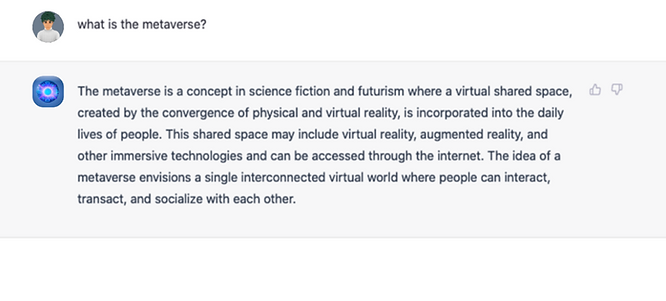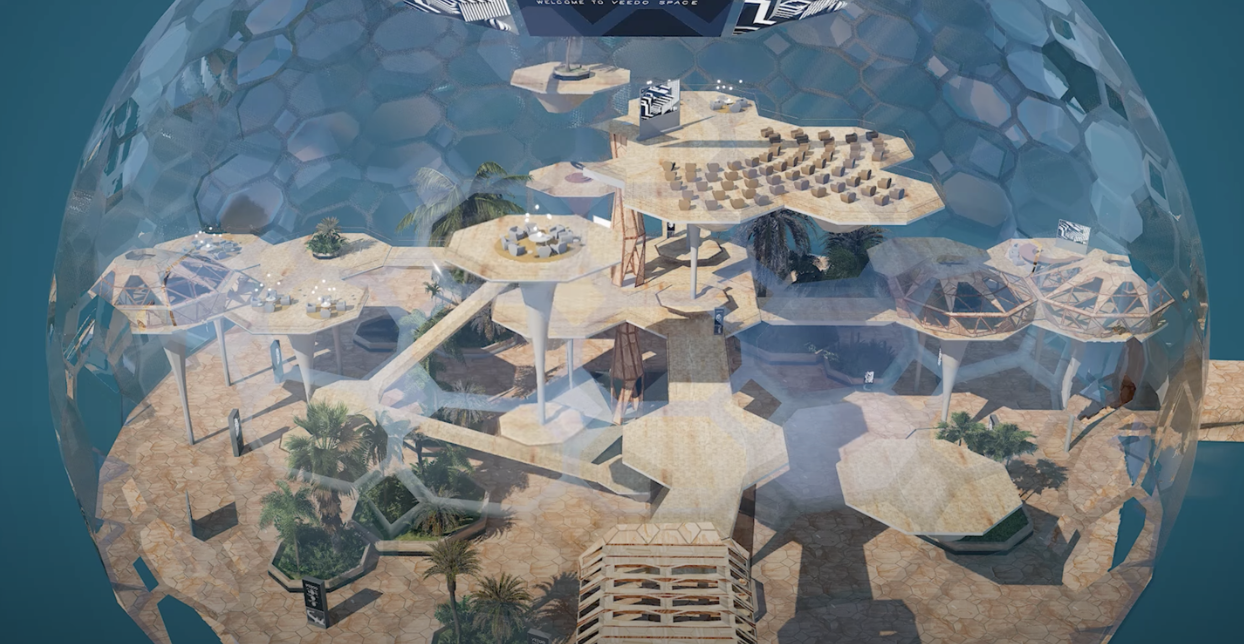What is the Metaverse? Its Meaning, Purpose, and Potential Explained
“Metaverse” is arguably THE buzzword of the past couple of years, entering the general lexicon behind massive hype.
From tech conglomerates and financial institutions to peripheral bit players, we’ve seen a staggering amount of monetary and intellectual resources directed toward shaping the metaverse.
However, when you ask different people what is the meaning of the metaverse? You will likely get a diverse range of vague definitions.
Even experienced tech professionals fail to define the metaverse precisely, and for a reason — it’s still very early in the development of the concept.
So what is the metaverse, you may ask? Although the correct answer may not surface until years down the line, the following is a look at the present and future of the metaverse to give you a better understanding of this trending topic.
Different definitions of the metaverse.
Let’s start with a few common definitions of the metaverse:
1. Origin of the word “metaverse.”
Science fiction author Neal Stephenson introduced the term in his 1992 novel Snow Crash. In the book, the meaning of metaverse is a VR-based successor to the Internet. Avatars controlled by real people and system daemons populate the metaverse, which is depicted as a limitless digital realm.

2. Metaverse in popular culture.
Ready Player 1, both the original novel by Ernest Cline and the Steven Spielberg-directed film, helped push the metaverse concept into popular culture. In the dystopian 2040s, people escape from reality by immersing themselves in OASIS, a popular VR gaming universe. Unlike today’s VR experience, where you can still hear and interact with your physical surroundings while wearing a VR headset, OASIS involves full-sensory immersion, and actions in the virtual world have real-world consequences.

3. Metaverse according to AI.
Here’s what one futuristic technology has to say about another futuristic technology. ChatGPT explains:
“The metaverse is a concept in science fiction and futurism where a virtual shared space, created by the convergence of physical and virtual reality, is incorporated into the daily lives of people. This shared space may include virtual reality, augmented reality, and other immersive technologies and can be accessed through the Internet. The idea of a metaverse envisions a single interconnected virtual world where people can interact, transact, and socialize with each other.”

4. Industry consensus on the metaverse. Although different companies may have varied visions for the metaverse, several elements are generally agreed upon:
- It’s a three-dimensional representation of the Internet where people can conduct daily activities. It could eventually mirror or even exceed the real world in functionality.
- It is powered by immersive technologies such as VR, AR, and MR.
- The metaverse is always on. It exists regardless of user presence.
- It’s limitless, with no borders and population restrictions. It supports an infinite number of immersive realms.
- It’s interoperable. Users can seamlessly move their avatars and digital assets from one metaverse to another.
- It has zero lag. Actions happen in real-time.
Present use cases of the metaverse.
Yes, the metaverse is still in its infancy, but exciting applications are already happening. Here are several real-world use cases:
1. Metaverse gaming and entertainment.
Immersive gaming is one of the most promising metaverse applications, with several immersive realms already gaining immense popularity.
Fortnite, created by software developer Epic Games, is a metaverse-like environment that offers immersive, multi-player gaming and includes social platform features.
In 2021, singer Ariana Grande “performed live” in Fortnite, drawing millions of viewers. Rapper Travis Scott and pop superstar Justin Bieber have also hosted similar events in the virtual environment.
In addition to immersive gaming, initiatives for theme parks, movie theaters, and esports, to name a few, are already underway in the metaverse.

2. Metaverse customer experiences.
With the advancement in VR and AR technologies, businesses are doing interesting things to enhance customer experiences. Up-and-coming electrical car maker Lucid Motors has transformed the showroom experience through immersive environments.
Customers can put on a VR headset and be transported into the car’s interior to explore the design details and try out different color schemes and options.
Lucid also offers a VR test drive to experience how the car performs on the road. The immersive simulation allows customers to accelerate, navigate, and negotiate turns just like in real life.
As metaverse-related technologies mature, companies and brands will have even more creative opportunities to interact with their customers.
3. Work collaboration in the metaverse.
The pandemic accelerated our demand for remote meetings. With the disruption of global travel, bridging distances was paramount, yet we also discovered that nothing could replace face-to-face interactions.
The metaverse has the capability to allow business professionals to feel like they are in the same room, even when they’re thousands of miles apart.
VIVE Sync is an all-in-one meeting and collaboration service made possible via a virtual ecosystem. Users can create different avatars for lifelike interactions, integrate existing work software applications into a 3D virtual workspace, and collaborate in different environments under the protection of enterprise-level security.

4. Digital products and metaverse-based services.
Companies are creating new revenue streams via products and services exclusively available in the metaverse.
Fashion house Ralph Lauren is establishing virtual shops in the metaverse and designing clothing items for avatars. Lifestyle brand Nike launched a Web3-based platform where people can create, buy, and sell NFTs (non-fungible tokens). You can also find digital art on our Market!
Metaverse development challenges.
Research firm Gartner projects that 25% of people will spend at least one hour per day in the metaverse by 2026. According to a December 2021 Bloomberg Intelligence analysis, metaverse platforms are expected to become an US$800 billion market by 2024.
The metaverse’s future may seem infinite, but the road to the promised land is full of obstacles. Here are a few of them:
1. Overpromise.
You’ve all seen promotional videos of lifelike, animated avatars frolicking in three-dimensional wonderlands. Yet, when you do step into most current metaverses, the environments offer graphics quality reminiscent of early 90s video games. The lack of genuinely engaging applications once users enter the metaverse is another reason we are years away from fulfilling the metaverse promise.
Marketing 101 tip: manage your clients’ expectations.
2. Reliance on advanced yet undefined technologies.
Several technologies are considered critical to the metaverse’s future — blockchain, AI, 5G, cloud computing, and XR, to name a few. They are all still in various phases of early development and adoption.
What the metaverse will ultimately look like depends on the advancement on multiple technological fronts.
3. Privacy: decentralized vs. centralized.
The current Internet is dominated by a handful of tech conglomerates. One of the promises of the metaverse is a decentralized digital world.
However, at present, the same tech giants are the ones pouring resources into metaverse development and driving the narratives. Thankfully, not all metaverse companies are interested in your data.
4. Cost of entry.
High-end immersive devices are the portals to enter many (but not all) virtual worlds, and suitable environments in which to operate these devices may be unavailable to everyone.
With current global economic uncertainties, middle-class consumers are unlikely to invest in unfamiliar technological gadgets, significantly slowing new-user entry and service subscription.
5. Do we need or want to escape from the real world?
When everything was shut down during the pandemic, hanging out in a digital space sounded cool and may even have been necessary.
Now that the world has opened up again and life is transitioning back to normal, we have rediscovered that there is simply no substitution for real-life interactions. A successful metaverse must closely recreate those kinds of interactions.
So, what are the present and future of the metaverse?
The “metaverse” concept is commonly thought of as an immersive, three-dimensional representation of the Internet and could, eventually, mirror the real world. It’s a seamless synergy of the physical environment and virtual reality. People will be able to live their daily lives just as easily as they would using the current Internet or via face-to-face interactions and brick-and-mortar infrastructure.
In truth, however, current efforts to shape the metaverse are fragmented. There are many metaverses in the works, but interoperability is lacking among them, meaning an immersive digital world where “everything is possible” is still years, perhaps decades, away.
Yes, it’s early, but just like any new frontier, the trailblazers and early settlers get to claim the most fertile lands. The metaverse dream is too attractive and potentially lucrative for businesses to take a wait-and-see approach. With so many intellectual and financial resources already plowed into developing the metaverse, rapid growth beyond current projections is also likely.
In the short term, an immersive metaverse experience will involve one of several Internet portals. Some will function well on a smartphone, some will still be better on a two-dimensional computer screen, and hopefully, some can be best appreciated in a true metaverse-like environment.
Ultimately, what will drive the success of the metaverse is the promise that it will deliver benefits that are impossible to achieve with the current Internet architecture and in the real world.
The word “metaverse” may have originated from fiction, but we are currently witnessing what it takes to realize someone’s brilliant imagination. What an exciting time!
